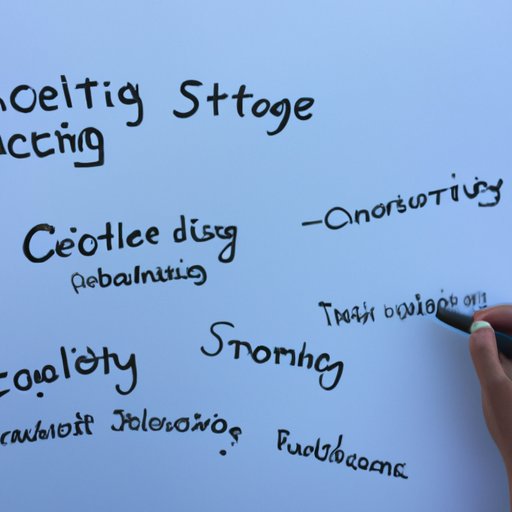Introduction
Conflict in literature is a struggle between opposing forces that creates tension and suspense. It can take many forms, from person vs. person to person vs. self, and it serves as an integral part of storytelling. This article will explore the different types and forms of conflict, their role in both fiction and nonfiction, and how they impact storytelling.
Understanding the Types of Conflict in Literature
Conflict in literature can be divided into four main types: person vs. person, person vs. nature, person vs. society, and person vs. self. Person vs. person conflict occurs when two characters have opposing goals or desires. This type of conflict is often seen in stories with a protagonist and antagonist, where the protagonist is working to achieve a goal while the antagonist is trying to prevent them from doing so. Person vs. nature conflict occurs when a character is struggling against natural forces such as weather, disease, or animals. Person vs. society conflict occurs when a character is fighting against societal expectations or norms. Finally, person vs. self conflict occurs when a character is struggling with their own inner demons or personal beliefs.

Exploring the Different Forms of Conflict in Literary Works
Conflict in literature can also be divided into two forms: external and internal. External conflict occurs when a character is in direct opposition to another character or force. This type of conflict is often seen in stories with a protagonist and antagonist, where the protagonist is working to achieve a goal while the antagonist is trying to prevent them from doing so. Internal conflict occurs when a character is in conflict with themselves, struggling with their own beliefs and values. This type of conflict is often seen in stories where the protagonist is facing a moral dilemma or grappling with difficult emotions.
Examining the Role of Conflict in Fiction and Nonfiction
Conflict plays an important role in both fiction and nonfiction. In fiction, conflict is used to create tension and suspense, and to move the plot forward. Conflict can also be used to develop characters, as it allows readers to see how characters react to and handle difficult situations. In nonfiction, conflict can be used to explore complex topics and to demonstrate the impact of certain events or decisions.
Analyzing How Characters Handle Conflict in Literature
Conflict in literature can also be used to examine how characters handle difficult situations. Characters must make decisions, adapt to change, and show growth in order to overcome the conflicts they face. By examining how characters handle conflict, readers can gain insight into their personalities and motivations.

Investigating the Impact of Conflict on Storytelling
Conflict can also have a major impact on storytelling. It helps to define relationships between characters, demonstrate theme, and establish tone. Conflict can also be used to introduce unexpected events, resolve problems, and build anticipation. Without conflict, stories would lack tension and excitement, making them less interesting for readers.

Examining the Use of Conflict to Create Tension and Suspense
Conflict is essential for creating tension and suspense in literature. Unexpected events, unresolved problems, and rising stakes all add to the tension of a story, and can leave readers wondering what will happen next. By introducing conflict, authors can keep readers engaged and increase the impact of the story.

Exploring the Relationship Between Conflict and Character Development
Conflict can also be used to explore character development. Through conflict, characters can demonstrate personal growth, show moral development, and explore emotional maturity. By examining how characters handle difficult situations, readers can gain insight into their personalities and motivations.
Conclusion
Conflict is an essential element of literature, and can take many forms. It can be used to create tension and suspense, develop characters, and move the plot forward. It can also be used to define relationships between characters, demonstrate theme, and establish tone. Conflict can help readers understand how characters handle difficult situations, and can lead to personal growth and moral development. Ultimately, conflict is an essential tool for telling compelling stories and engaging readers.
(Note: Is this article not meeting your expectations? Do you have knowledge or insights to share? Unlock new opportunities and expand your reach by joining our authors team. Click Registration to join us and share your expertise with our readers.)
